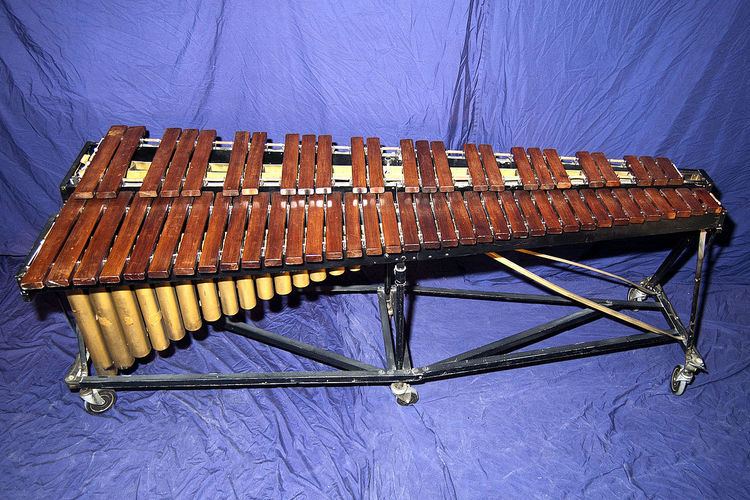 | ||
The xylorimba (sometimes referred to as xylo-marimba or marimba-xylophone) is a pitched percussion instrument corresponding to a xylophone with an extended range (and not to a combination of a xylophone with a marimba, as the name might suggest).
Like the xylophone and marimba, the xylorimba consists of a series of wooden bars laid out like a piano keyboard "with a compass sufficiently large to embrace the low-sounding bars of the marimba and the highest-sounding bars of the xylophone."
"The lower notes of the xylorimba sound like a xylophone rather than a marimba on account of the bars being thicker and narrower than those of a marimba (the bars of the xylophone and the marimba are shaped differently to emphasize different overtones) and of the different size and shape of the resonators" (Blades and Holland n.d.).
"As the marimba-xylophone it was a popular instrument in the 1920s and 30s, particularly in vaudeville" (Blades and Holland n.d.).
The name has been a source of confusion. Many composers have called for ‘xylorimba’, including Alban Berg, Pierre Boulez and Olivier Messiaen, but written parts requiring only a four-octave xylophone (Blades and Holland n.d.) However, Pierre Boulez wrote for two five-octave xylorimbas in Pli selon pli (Blades and Holland n.d.).
Compositions including xylorimba
(4, 4.5, and 5-octave instruments):
